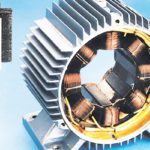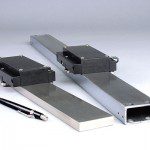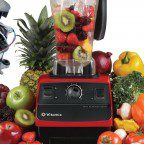One the main drawbacks to switched-reluctance motors come from their control and drive electronics. They must be accurate and responsive to monitor continually various aspects of the motor for it to run effectively. However, as technology improves switched-reluctance motors may become more common with the rise of improved drives and controllers.
As mentioned in FAQ: Why are switched-reluctance motors (SRMs) so difficult to control? SRMs have continuously varying inductance that influences the motor by causing torque ripples and noise. This is avoidable by accurately tracking the position of the rotor and compensating for any variations in inductance and current on the fly. Such a setup, however, requires components to monitor and calculate the needed corrections. By using an encoder to track the rotor, a closed feedback loop can be setup. This loop can send the required information to the controller, which can calculate how much current the driver then must send to the motor. New software and algorithms are developing that allow such calculations to occur rapidly and accurately. Drives that can output such continuously changing current are dropping in price and complexity as well. These factors may overcome the limitations in driving SRMs.
SRMs require unipolar drives. This is a rather inefficient method of driving, and it calls for an extra wire as a center tap. While there is no changing this fundamental fact, unipolar drives are also seeing developments and improvements. As new drive technologies develop, they are better able to perform the accurate and evolving current delivery SRMs require. Some manufacturers have developed control schemes and algorithms that require no sensors or encoders, but rather use estimating algorithms to determine the needed conditions in real time.
Furthermore, as new modeling and control software develops, along with innovations such as embedded microchips and the Internet of Things, all the data required to drive an SRM properly could soon be far more easily available. This would allow the constant diagnostics and monitoring required by SRMs to easily integrate with all the other components of a system.







Leave a Reply
You must be logged in to post a comment.